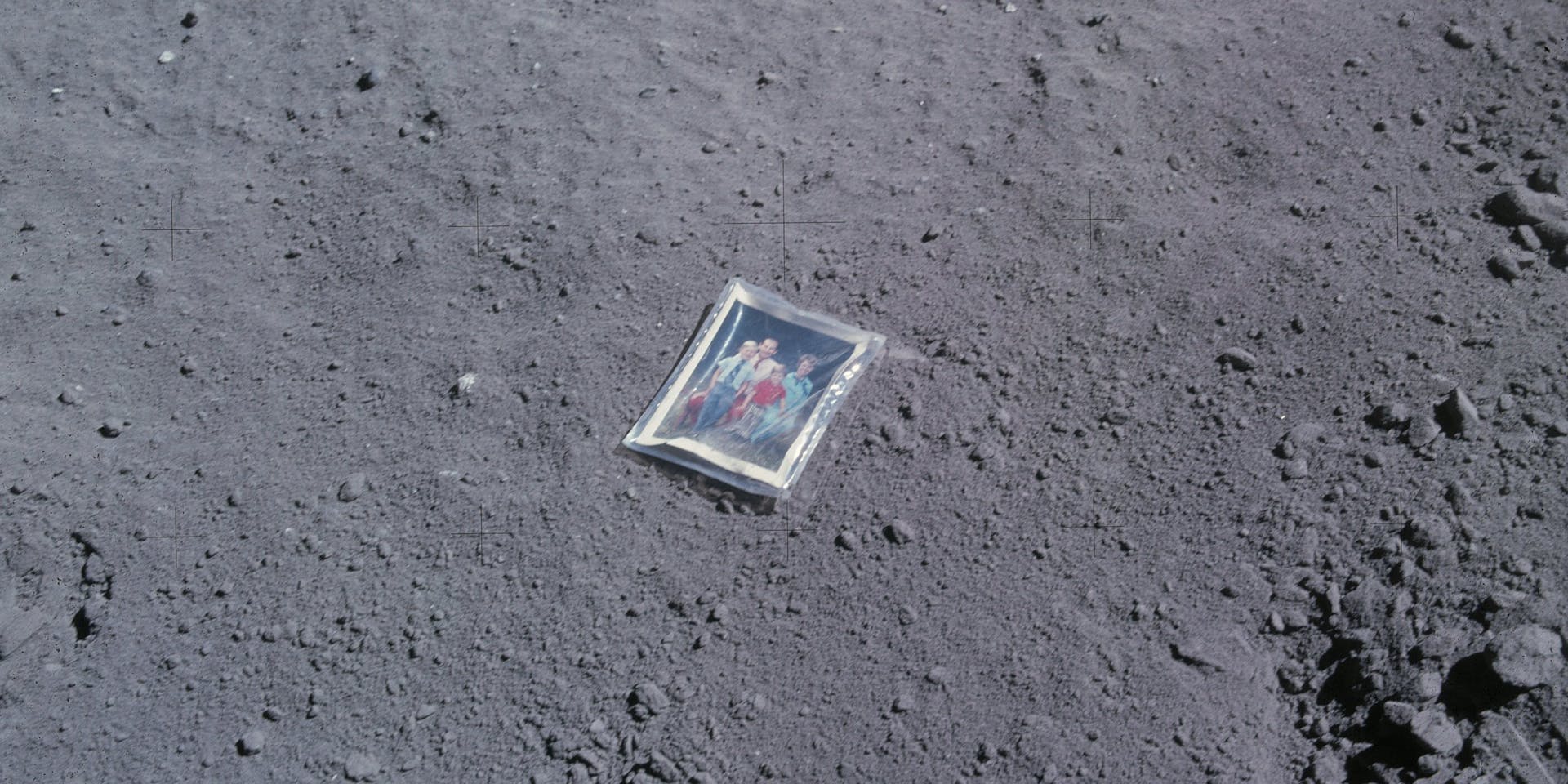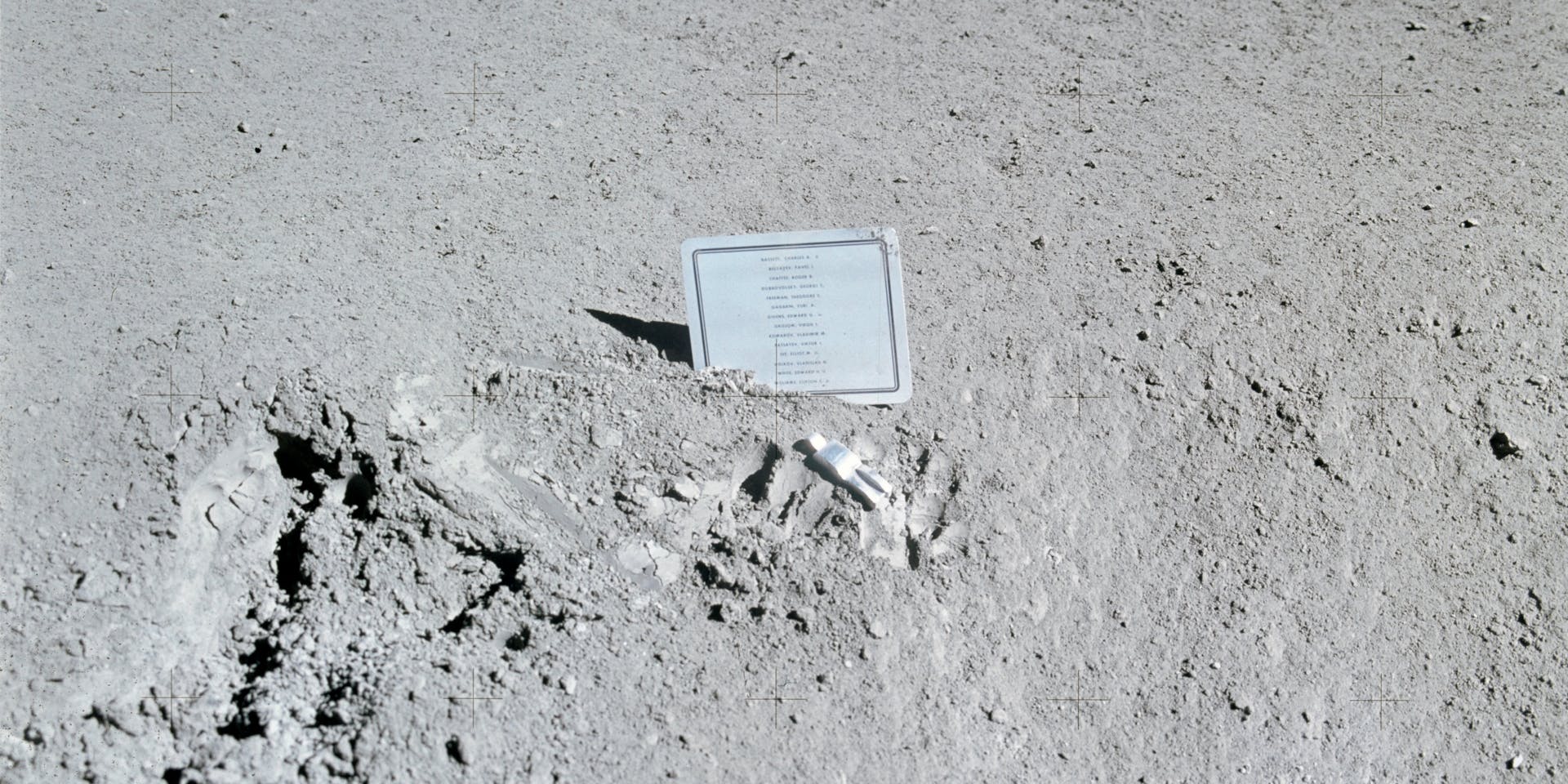The 10 most unusual objects left behind on the Moon

In 2012, NASA published a 22-page report listing over 800 man-made objects left behind on the Moon. These include fragments of lunar modules, sub-satellites, magnetometers, cameras, lunar roving vehicles and a few unexpected curiosities, to say the least!
A hawk's feather and a hammer
"I’m holding a feather in my left hand, a hammer in my right hand...". On August 2, 1971, Commander David Scott, a member of the Apollo 15 mission, began a scientific demonstration on the Moon in front of a television camera. Scott released both objects simultaneously from a height of about 1.6 meters (5.2 ft). Surprisingly, they landed on the ground at exactly the same time! This is because there is no atmosphere on the Moon, so there’s no air resistance. This example proves the validity of Galileo's time-honored theory: gravity acts on all objects in the same way, regardless of their mass.
"I’m holding a feather in my left hand, a hammer in my right hand..."
Commander, member of the Apollo 15 mission
The ashes of a man
On July 18, 1997, Eugene Shoemaker was tragically killed in a car accident in Alice Springs, Australia. Considered the father of astrogeology, he had dedicated his life to space exploration and trained several Apollo astronauts in lunar rock sampling. In 1999, one of his former students obtained 28 grams (one ounce) of his ashes which were taken aboard NASA's Lunar Prospector spacecraft. The spacecraft intentionally crashed on the Moon, giving the scientist an unexpected resting place for eternity.
An ultraviolet telescope
Apollo 16 is often considered the most scientific of all the lunar expeditions. During this expedition, astronaut John Young used a small telescope (gold-plated to withstand the extreme heat) to observe nebulae, stars, and the Earth's atmosphere in ultraviolet (UV) light. He became the first person to practice astronomy from a celestial body other than the Earth... and then left the instrument behind.
A family photo
Astronaut Charles Duke left this item behind in a plastic envelope on the dusty lunar soil next to a footprint on April 20, 1971. The youngest human to ever walk on the Moon at age 36, Duke had promised his wife and children that he would take them with him on his journey.
Hasselblad cameras
On the return trip from the Moon to Earth, every pound counts! This is why the astronauts of the various Apollo missions had to leave behind 12 of the 14 Hasselblad cameras they brought with them. Rather than take on too much, they brought back only the photographic film, with which they took an average of 1,500 shots.

A work of art
Lying in lunar dust for more than 50 years, the small 3-inch (8.5 cm) tall Fallen Astronaut aluminum statuette was designed by Belgian artist Paul van Hoeydonk. Deposited by the Apollo 15 mission in 1971, the artwork pays tribute to the 14 astronauts who gave their lives for the conquest of space. A plaque next to the figure lists their names.
Two golf balls
Although blurry, this stunning video from February 6, 1971 shows astronaut Alan Shepard transforming the telescoping shaft of a rock sampling tool into a golf club by attaching a 6-iron to it. He then took out two small balls from a sock and hit them on the spot with one hand. Fifty years later, thanks to the work of an imaging specialist, the second ball was found: it had been catapulted 36 meters (118 feet)!

An olive branch
During the Apollo 11 mission in 1969, Neil Armstrong did more than take the first step on the Moon! He and his fellow astronauts also deposited a patch commemorating the tragic Apollo 1 mission, a silicon disc containing the messages of goodwill from 73 world leaders, two medals honoring astronauts Vladimir Komarov and Yuri Gagarin, and a gold replica of an olive branch, a universal symbol of peace.
Bags of human waste
Astronauts on the Apollo missions shared a very small cabin with no shower or toilet facilities, and were quick to dispose of their personal waste when they landed on the Moon. They left behind a total of 96 garbage bags of urine, feces and vomit, carefully wrapped to prevent bacteriological contamination.
An American flag
Perhaps the least surprising item on this list. There are actually six American flags on the Moon. The Lunar Reconnaissance Orbiter, which has been orbiting the silver astral body since 2009, has observed those planted by the Apollo 12, 16 and 17 missions. They still stand proud, though probably faded by the intense ultraviolet light. However, the one planted by Buzz Aldrin and Neil Armstrong during the Apollo 11 mission hasn't been seen since 1969.